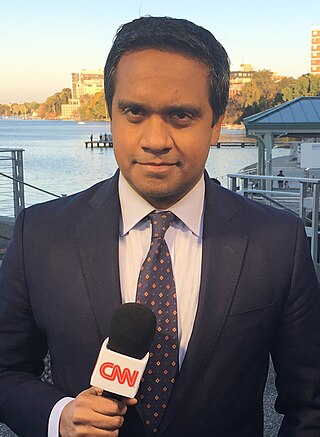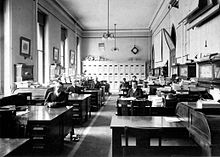Overview
The United States Senate established its first press gallery in 1841, and both the House of Representatives and Senate set aside galleries for reporters when they moved into their current chambers in 1857 and 1859. (The White House did not designate a press room until 1902.) The press galleries in Congress are operated by superintendents, appointed by the House and Senate sergeants at arms, and by Standing Committees of Correspondents, elected by the journalists.
The first Standing Committee of Correspondents was created in 1879 to eliminate lobbyists from the press galleries. With the approval of House and Senate leaders, reporters drafted a set of requirements for accreditation. Press passes were issued only to those whose primary source of income was journalism, and who reported by telegraph to a daily newspaper. The rules eliminated lobbyists, but also women and minorities. Nineteenth-century women reporters were confined to social news coverage, which did not justify the cost of telegraphing. African American reporters were limited to the black press, which were then all weekly papers. Not until the 1940s did women and minorities overcome these obstacles.
In the twentieth century, the same rules denied press passes to radio reporters, unless they simultaneously reported for daily newspapers. In response to complaints from broadcasters, Congress in 1939 created a Radio Gallery in each house, later the Radio-TV galleries. Congress also established a Periodical Press Gallery for magazine and newsletter writers, and a Press Photographers' Gallery. By the 1990s, Internet reporters and bloggers began applying for press passes. After initial resistance, the press galleries adjusted their rules to admit those who earn their living from their journalism, and who are not underwritten by advocacy groups.
Reporters who occupy the press galleries are known as the press corps. Now numbering in the thousands, they rely on similar press operations in all three branches of the government. Despite the government's efforts to accommodate the press corps, however, the relationship between the press and the politicians remains essentially adversarial, punctuated by politicians' complaints of bias and misrepresentation, and by reporters' protests against government attempts to manipulate the news.
The White House press corps is the group of journalists, correspondents, and members of the media usually assigned to the White House in Washington, D.C., to cover the president of the United States, White House events, and news briefings. Its offices are located in the West Wing.

Mary Martha Corinne Morrison Claiborne "Cokie" Roberts was an American journalist and author. Her career included decades as a political reporter and analyst for National Public Radio, PBS, and ABC News, with prominent positions on Morning Edition, The MacNeil/Lehrer NewsHour, World News Tonight, and This Week. She was considered one of NPR's "Founding Mothers" along with Susan Stamberg, Linda Wertheimer and Nina Totenberg.
The Gridiron Club is the oldest and among the most prestigious journalistic organizations in Washington, D.C.
The Canberra Press Gallery, officially called the Federal Parliamentary Press Gallery, is the name given to the approximately 180 journalists and their support staff, including producers, editors and camera crews, who report the workings of the Australian Parliament. The name derives from the press galleries, which are enclosed viewing areas above the chambers of the Senate and the House of Representatives, which the President and the Speaker have allocated to the media.
Eleanor Hall is an Australian journalist and presenter.
Karen Middleton is a political journalist in the Canberra Press Gallery covering the Parliament of Australia in Canberra, the national capital of Australia.

Donald A. Ritchie is Historian Emeritus of the United States Senate.
Lisa Joy Millar is an Australian television news presenter and journalist.

Women in journalism are individuals who participate in journalism. As journalism became a profession, women were restricted by custom from access to journalism occupations, and faced significant discrimination within the profession. Nevertheless, women operated as editors, reporters, sports analysts and journalists even before the 1890s in some countries as far back as the 18th-century.
The terms the Lobby and Lobby journalists collectively characterise the political journalists in the United Kingdom Houses of Parliament. The term derives from the special access they receive to the Members' Lobby. Lobby journalism refers to the news coverage, largely unattributed, generated by reporters from the political proceedings in Parliament.

Alice Allison Dunnigan was an American journalist, civil rights activist and author. Dunnigan was the first African-American female correspondent to receive White House credentials, and the first black female member of the Senate and House of Representatives press galleries. She wrote an autobiography entitled Alice A. Dunnigan: A Black Woman's Experience. She is commemorated by an official Kentucky Historical Society marker.

Stella May Henderson was a New Zealand feminist, university graduate and journalist. She was the first woman parliamentary reporter for a major New Zealand newspaper.
The Periodical Press Galleries (PPG), along with the Daily Press Galleries, Radio and Television Galleries, and Senate Photographers’ Gallery, comprise the four media galleries of the United States Congress. The United States Congress is the only legislature to divide its media into distinct press galleries. Collectively known as the Periodical Press Galleries, the PPG maintain two separate offices in the House and Senate wings of the Capitol in order to “assist Members of Congress, Congressional staff, and bona fide correspondents covering Congress, with media logistics and press-related concerns.”
Harry S. McAlpin (1906-1985) was an American reporter. He was the first African-American reporter to attend a U.S. Presidential news conference in 1944.
Louis R. Lautier (1897-1962) was the first African-American journalist admitted to the White House Correspondents' Association (1951) and to the National Press Club (1955).

April Danielle Ryan is an American reporter, author, and White House Correspondent for The Grio. From January 1997 to November 2020 Ryan served as a White House correspondent and Washington, D.C., bureau chief for American Urban Radio Networks. In 2017, she joined CNN as a political analyst. In May 2017, the National Association of Black Journalists named Ryan as the "Journalist of the Year".

Manu Raju is an American journalist who serves as the Chief Congressional Correspondent at the news network CNN, covering the United States Congress and campaign politics. Raju previously reported for Politico as a senior Capitol Hill correspondent and for other D.C. news outlets as well.
James Bruce Ross Phillips, known professionally as Bruce Phillips, was a Canadian television journalist and civil servant. He was best known as the Parliament Hill bureau chief of CTV News, and host of the political talk show Question Period, from 1968 to 1985. As host of Question Period, he was particularly noted for his year-end interviews with Prime Ministers.
The U.S. Senate Daily Press Gallery, along with the House Daily Press Gallery, the House and Senate Periodical Press Galleries, the House and Senate radio and Television Galleries, and the Senate Photographers’ Gallery, are the four media galleries of the United States Congress. The Senate Daily Press Gallery is located in the Senate wing of the United States Capitol. The gallery staff assist correspondents generally and maintain their access to Senate proceedings. The gallery includes the press seats that overlook the Senate floor and the surrounding offices where reporters work. Gallery staff track floor action, tally votes, and coordinate coverage of Senate news conferences and hearings.

Emily Pomona Edson Briggs was a journalist in Washington, D.C. during the 19th century. She was one of the first American women to become nationally known as a reporter. She came to national attention during the Civil War for her writing under the pen name Olivia in the Washington Chronicle and Philadelphia Press.








